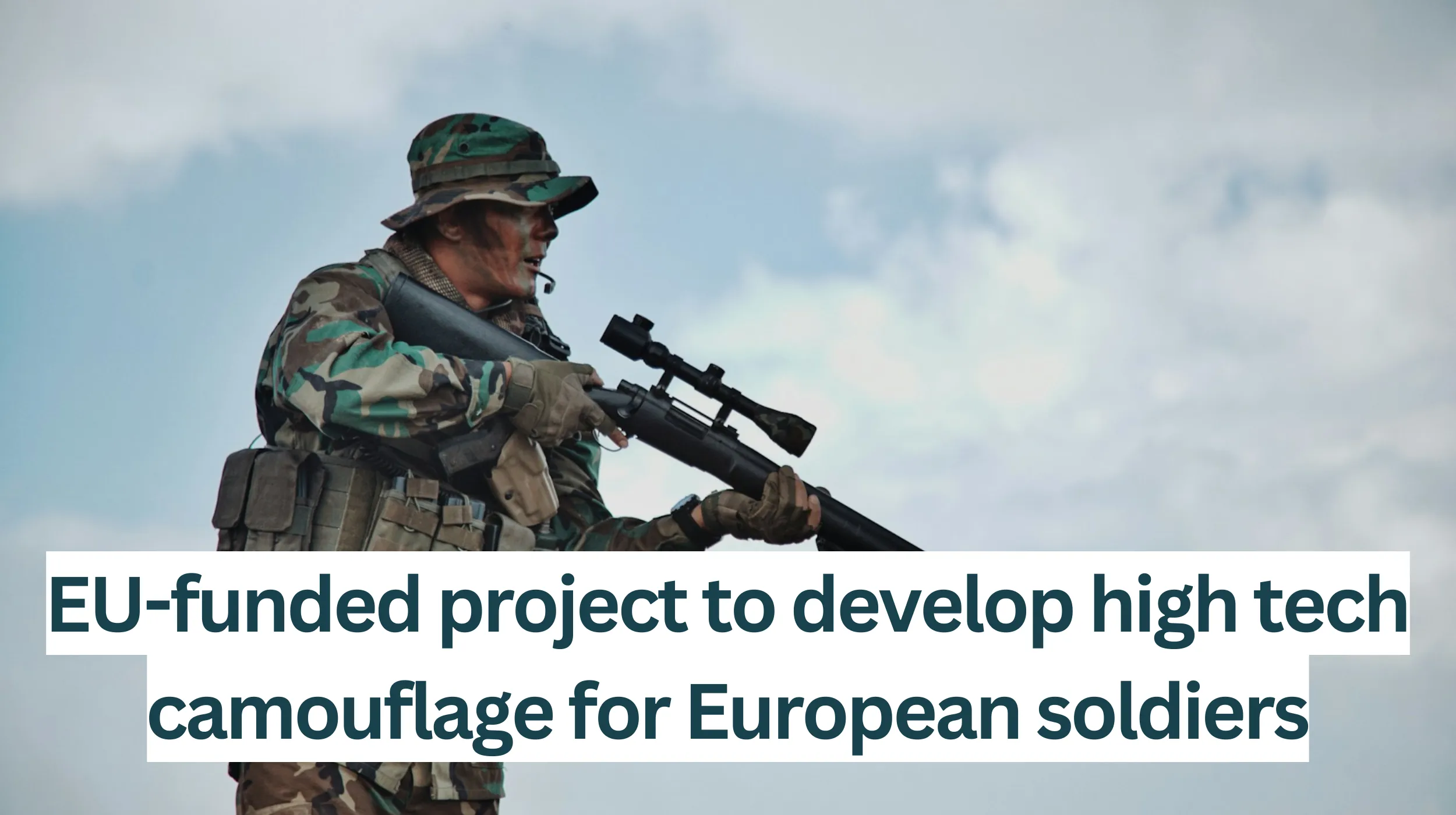Belgium (Brussels Morning Newspaper) – An EU-funded project aims to provide a much-needed boost for Europe’s defence sector and improve the survival chances of its military in the battlefield.
WHAT IS IT?
Led by the Portuguese Technological Centre for Textile and Clothing Industry CITEVE, the project, named ACROSS (Adaptive Camouflage foR sOldierS and vehicleS), was presented at the Press Club in Brussels on Monday, 27 May.
Financed under European Defence Fund (EDF) and with an overall budget of about €14.5 million, ACROSS comprises 19 partners from Portugal, Spain, France, Germany, the Netherlands, Italy, Sweden, Lithuania and Greece. It brings together military forces, the textile and electronics industries and R&D centres.
ACROSS aims to develop multispectral, adaptive camouflage solutions, by combining existing materials and technology with the innovative research, CITEVE’s Managing Director, António Braz Costa, explained. Designed for both people and vehicles, the new equipment will be able to adapt their signatures to different backgrounds, to surveillance sensors, different weather and light conditions and threat levels to reduce the ranges of detection, tracking, recognition and identification.
“This project shows we can do this for ourselves here in Europe. With this project, everything stays in Europe and will support local supply chains. At present we in Europe do depend to some extent on other countries and regions, like the US and Asia, but we need to do these things ourselves within Europe and I am glad to say the specialists involved in the ACROSS project are trying to do this”, Martin Jõesaar, ACROSS Project Officer at the European Commission’s Directorate-General for Defence Industry and Space.
EU INCREASES DEFENCE SPENDING
EU countries have, in fact, sharply increased defence spending in recent years. In 2022, in absolute terms, EU defence expenditure increased to €204 billion, up from €184 billion in 2021. Between the start of the war in Ukraine and June last year, EU states spent more than €100 billion on military equipment but 80% was outside the EU, with more than 60% going to the United States alone.
“We aim to be able to develop new equipment that will increase soldiers’ performance and ability to survive. This is a challenge and it will not be easy but we intend to achieve it by developing new solutions”, explained CITEVE’s Gilda Santos. “This is an area of opportunity and we need an open mind and will have to carry out lots of tests. But the whole thing is all orientated for the end user: the soldier.”
HOW WILL THE PROJECT SUCCEED?
To reach this goal, ACROSS is conducting research on the combination of innovative and current technologies using disruptive materials to achieve protection on the following spectral ranges: UV radiation (100-380 nm), VIS radiation (380-780 nm), near IR (0.75–1.4 μm), short-wavelength IR (1.4–3 μm), mid-wavelength IR (3-8 μm) and long-wavelength IR (8-15 μm), along with radar bands X (8–12 GHz), Ka (27-40 GHz) and W (75-119 GHz).
Stressing the on the field importance of increasing camouflage capabilities, Lieutenant-Colonel Rodrigues said that “what this type of technology can give to a soldier is life – the chance to live after the battle.” Besides the better hiding features, it will also save soldiers valuable time when switching from one environment to the other. “For example, if they are moving from a forest to an urban landscape, they don’t have to take the time to change their clothes”, he added.
The implementation period is of 42 months, 6 of which have already passed. The development of the materials will take place in stages. The compatibility of materials with different spectre lengths will be tested in a first conceptual demonstrator, which will be presented to the end user, i.e. the army, for feedback.
Building from the first demonstrator, a conceptual design followed by a global demonstrator will be developed. By the last year, it is hoped solid prototypes can be more widely tested by the military.



